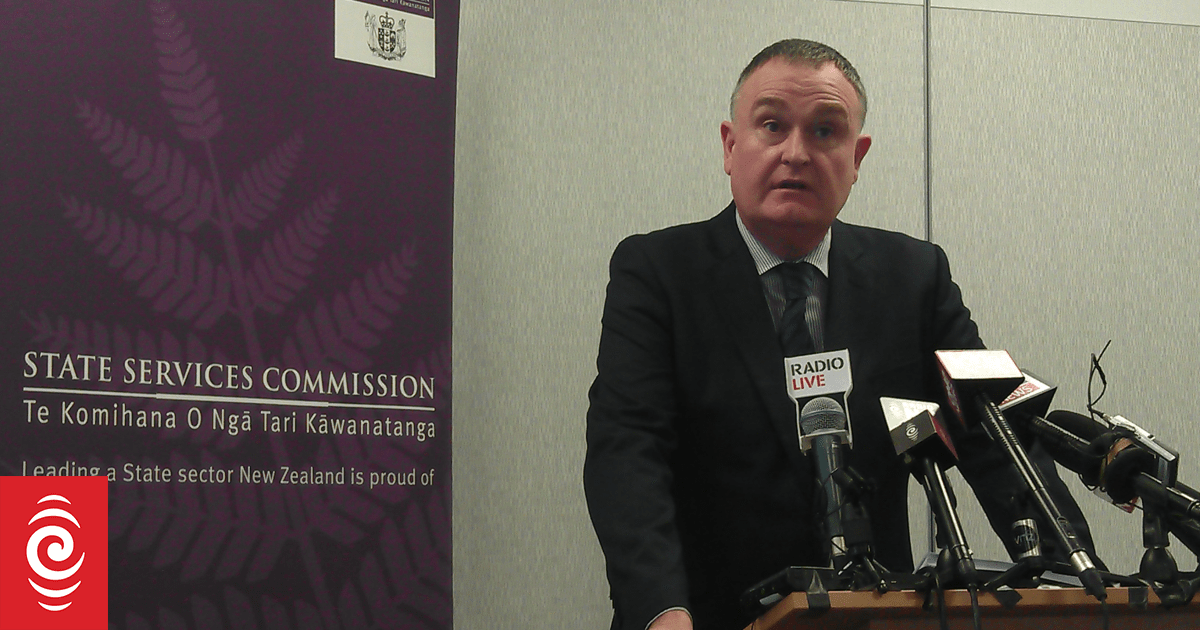Treasury secretary Iain Rennie.
Photo: RNZ
The Treasury has warned the strength of the Crown’s balance sheet is likely to deteriorate if policy settings are not changed.
Its 2025 Investment Statement found liabilities were forecast to rise 33 percent by 2029 to $504 billion, as the debt grows to fund investment spending and operating deficits.
The increase in liabilities was also projected to outpace the increase in assets, with net worth expected to fall 10 percent to $172b.
As at June 2024, assets on the Crown’s balance sheet totalled $571b, and liabilities were $380b.
The ‘social’ portfolio spread $314b worth of assets across 141 entities such as transport, housing, education, and health.
$99b of assets were in the ‘commercial’ portfolio, which included “services related to strategic policy objectives, in a commercial manner,” such as Air New Zealand and the gentailers.
The ‘financial’ portfolio, which included entities like the Reserve Bank, ACC, and the Superannuation Fund, held $158b of assets, but also $280b of liabilities, accounting for 74 percent of the total.
The Treasury said there were ageing assets in the social portfolio that were becoming unfit for purpose, the commercial portfolio’s entities did not always meet performance expectations, and the financial portfolio held assets and liabilities facing different risks.
The balance sheet had more than doubled in size over the last decade, but assets and liabilities were projected to grow at a slower rate over the next ten years.
Since the last investment statement in 2022, assets had increased by 30 percent ($132b). Treasury said that was driven mainly by growth in physical assets, and more than half of that growth was down to revaluations, largely due to inflationary pressures.
Liabilities had increased by 35 percent ($98b), to fund investment and operating deficits.
Treasury secretary Iain Rennie said as demands on public services and investment had changed, the balance sheet had become increasingly important, and challenging to manage.
“The Investment Statement shows we need to improve our asset management – to get more value from existing investments, ensure we’re investing in the right assets, and improve our risk management and understanding.”
The Treasury suggested changes to balance sheet management in order to maintain New Zealand’s credit rating, and prepare the Crown for any shocks.
The suggestions are largely procedural, mostly focusing on “better” or “consistent” information and monitoring.
This included changes to decision-making processes, such as more consistent approaches to long-term planning across agencies, better business case development, and improving the information of assets, liabilities, and risks.
The Treasury also called for better asset management, saying some assets were underperforming, poorly maintained, and lacking quality information. It suggested more regular reviews of assets, clarifying the purpose of government ownership for each commercial entity, and adopting a more formal capital recycling programme.
“A formal capital recycling programme may be useful where government reallocates or reinvests capital from existing assets or infrastructure projects into new opportunities or projects to meet policy
objectives,” the report said.
“In this way assets that are no longer required or have limited ownership value are not retained. This can avoid the often increased operating and maintenance costs from ongoing ownership.”
The statement also said the Crown could manage the risks on its balance sheet better by centralising the management, and stress testing the combined fiscal balance sheet.
Sign up for Ngā Pitopito Kōrero, a daily newsletter curated by our editors and delivered straight to your inbox every weekday.

